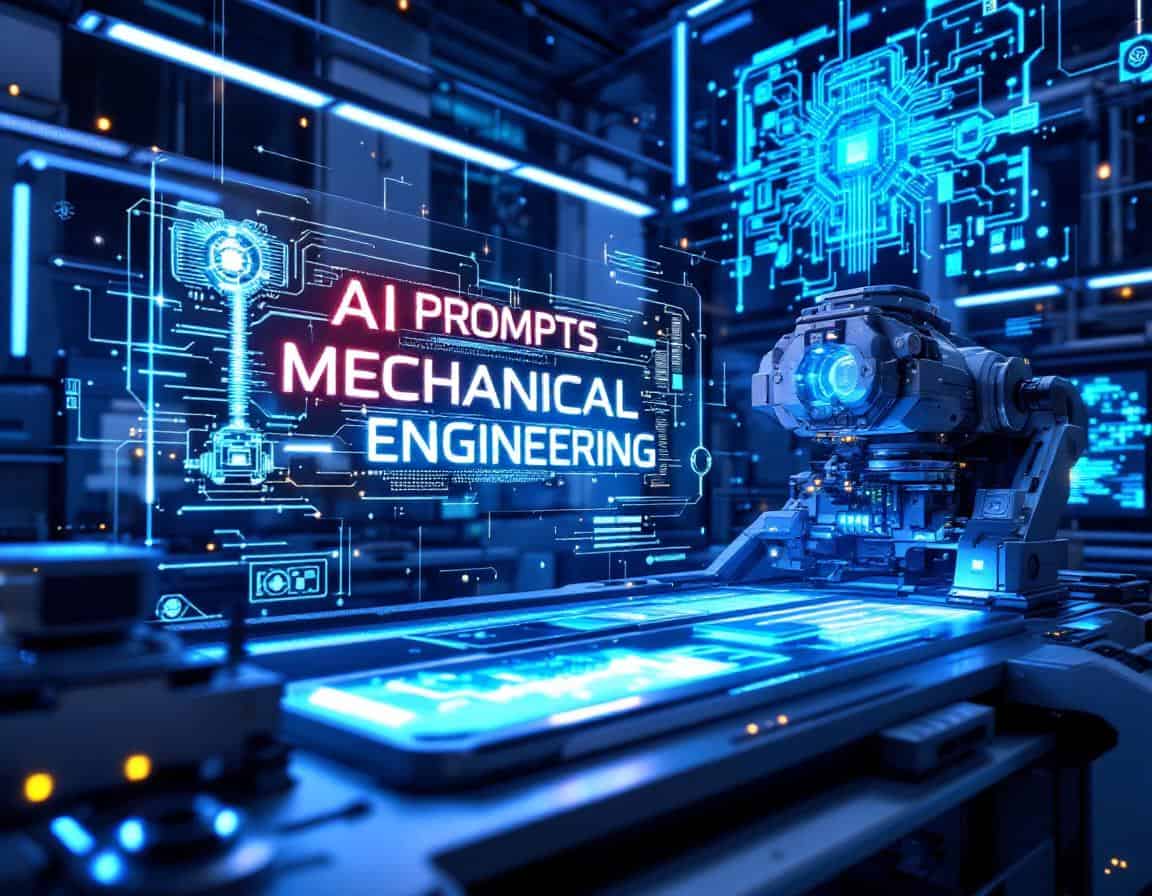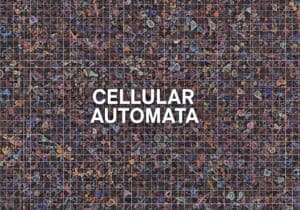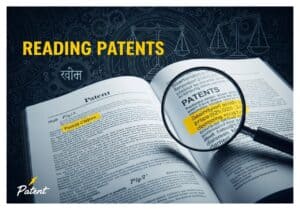
Gli strumenti di intelligenza artificiale online stanno rapidamente trasformando l'ingegneria meccanica aumentando le capacità umane di progettazione e analisi, produzionee manutenzione. Questi sistemi di intelligenza artificiale sono in grado di elaborare grandi quantità di dati, identificare modelli complessi e generare soluzioni innovative molto più rapidamente dei metodi tradizionali. Ad esempio, l'IA può aiutarvi a ottimizzare i progetti per le prestazioni e la producibilità, accelerare simulazioni complesse, prevedere le proprietà dei materiali e automatizzare un'ampia gamma di attività analitiche.
I suggerimenti forniti qui di seguito aiuteranno, ad esempio, a progettare in modo generativo, ad accelerare le simulazioni (FEA/CFD), ad aiutare nella manutenzione predittiva, dove l'intelligenza artificiale analizza i dati dei sensori dei macchinari per prevedere potenziali guasti, consentendo un'assistenza proattiva e riducendo al minimo i tempi di inattività, ad aiutare nella selezione dei materiali e molto altro ancora.
- Questa pagina è specifica per un dominio. Se necessario, è possibile disporre di funzionalità di ricerca complete per tutti i domini e tutti i criteri nel nostro > Elenco dei suggerimenti AI <, dedicato a progettazione del prodotto E innovazione.
- Per motivi di tempo e di risorse del server, le richieste sono riservate ai soli membri registrati e non sono visibili in basso se non si è registrati. È possibile registrarsi, 100% gratuitamente:
È necessaria l'iscrizione
Per accedere a questo contenuto è necessario essere membri.
- Ottimizzazione del disegno sperimentale
- Ingegneria meccanica
Prompt AI per Statistical Power Analysis for Experiments
- Progettazione per Sei Sigma (DfSS), Miglioramento dei processi, Ottimizzazione del processo, Garanzia di qualità, Controllo di qualità, Analisi statistica, Controllo statistico del processo (SPC), Test statistici, Validazione
This prompt requests the AI to perform a statistical power analysis for a mechanical engineering experiment based on input parameters such as effect size, sample size, and significance level. It helps determine if the experiment is sufficiently powered.
Uscita:
- Testo
- non richiede Internet in diretta
- Fields: {effect_size} {sample_size} {significance_level}
Perform a statistical power analysis for a mechanical engineering experiment with the following parameters: Effect Size: {effect_size}, Sample Size: {sample_size}, Significance Level (alpha): {significance_level}. Calculate the statistical power and interpret whether the current design is adequate. If underpowered, suggest adjustments to sample size or effect size. Present calculations step-by-step and summarize the conclusion clearly.
- Best for: Best for validating experimental designs through power calculations
- Assistenza per le proposte di sovvenzione e la scrittura scientifica
- Ingegneria meccanica
Prompt AI per Critica della metodologia del documento di ricerca
- Progettazione per la produzione additiva (DfAM), Industria meccanica, Metodologia, Miglioramento dei processi, Garanzia di qualità, Controllo di qualità, Ricerca e sviluppo, Analisi statistica, Validazione
Esamina e suggerisce miglioramenti per la sezione metodologica di un documento di ricerca di ingegneria meccanica, concentrandosi sulla chiarezza, la completezza, la giustificazione e l'adeguatezza dei metodi utilizzati. Questa richiesta contribuisce a migliorare il rigore e la riproducibilità della ricerca. Il risultato è una critica in formato markdown.
Uscita:
- Markdown
- non richiede Internet in diretta
- Campi: {testo della sezione_metodologia_attuale} {testo_obiettivi_di_ricerca} {elenco_chiave_attrezzature_o_software_utilizzati_csv}
Act as a Peer Reviewer for a Mechanical Engineering journal.
Your TASK is to critique the provided `{current_methodology_section_text}` from a research paper
keeping in mind the stated `{research_objectives_text}` and the `{key_equipment_or_software_used_list_csv}` (CSV: 'Item_Name
Model_Specification
Manufacturer').
The critique should focus on improving clarity
completeness
justification
and appropriateness of the described methodology.
**CRITIQUE AND RECOMMENDATIONS (MUST be Markdown format):**
**Critique of Methodology Section for Research Objectives: '`{research_objectives_text}`'**
**1. Overall Clarity and Structure:**
* **Assessment**: [Evaluate the overall readability
logical flow
and organization of the `{current_methodology_section_text}`. Is it easy to follow? Are steps presented in a logical sequence?]
* **Recommendations**: [Suggest improvements to structure
e.g.
'Consider using subheadings for distinct phases of the methodology like Experimental Setup
Data Collection
and Data Analysis.' or 'Clarify the transition between step X and step Y.']
**2. Completeness of Description:**
* **Assessment**: [Are all necessary details provided for another researcher to replicate the study? Consider aspects like:]
* Sample preparation (if applicable).
* Detailed parameters for `{key_equipment_or_software_used_list_csv}`.
* Environmental conditions.
* Duration
frequency
or number of measurements/simulations.
* Specific protocols or standards followed (and if they are cited).
* **Recommendations**: [Point out specific missing information
e.g.
'Specify the sampling rate used for data acquisition with [Sensor Name].' or 'Provide details on the mesh convergence study for the FEA model using [Software Name].' or 'Describe the calibration procedure for [Instrument Name].']
**3. Justification and Appropriateness of Methods:**
* **Assessment**: [Are the chosen methods
materials
and equipment appropriate for achieving the `{research_objectives_text}`? Is the choice of methods justified
either explicitly or implicitly through common practice? Are any limitations of the chosen methods acknowledged?]
* **Recommendations**: [Suggest areas where justification is weak or missing
e.g.
'Explain why [Specific Method A] was chosen over [Alternative Method B] for addressing [Specific Objective].' or 'Discuss the potential impact of using [Material Grade X] if its properties significantly differ from those assumed in the model.']
**4. Data Analysis and Statistical Treatment (if described):**
* **Assessment**: [If data analysis or statistical methods are mentioned
are they appropriate and clearly described? Are error analysis or uncertainty quantification addressed?]
* **Recommendations**: [e.g.
'Specify the statistical tests used to compare groups.' or 'Clarify how outliers were handled in the dataset.']
**5. Reproducibility:**
* **Assessment**: [Overall
does the section provide enough information to ensure that the work is reproducible?]
* **General Recommendations**: [Summarize key actions to enhance reproducibility.]
**Specific Comments/Queries (line numbers or specific phrases can be referenced if the AI were to see the original text with them):**
* [e.g.
'Regarding the statement "...optimized parameters were used..."
please specify how these parameters were optimized and what the final values were.']
* [e.g.
'The description of [Equipment X from `{key_equipment_or_software_used_list_csv}`] lacks details on its accuracy/resolution
which could be important.']
**IMPORTANT**: The critique should be constructive
specific
and aimed at helping the author improve the methodology section. Refer to the `{research_objectives_text}` to ensure alignment.
- Ideale per: Fornisce critiche costruttive dettagliate sulle sezioni metodologiche dei documenti di ricerca, aiutando gli ingegneri meccanici a migliorare il rigore della chiarezza e la riproducibilità del loro lavoro.
- Ottimizzazione del disegno sperimentale
- Ingegneria meccanica
Prompt AI per Creatore della lista di controllo per la convalida dei dati sperimentali
- Industria meccanica, Garanzia di qualità, Controllo di qualità, Gestione della qualità, Analisi statistica, Metodi di prova, Validazione, Verifica
Questa richiesta chiede all'IA di generare una lista di controllo dettagliata per la convalida della qualità e dell'integrità dei dati sperimentali di ingegneria meccanica, in base alla descrizione dell'esperimento e al tipo di dati forniti dall'utente.
Uscita:
- Markdown
- non richiede Internet in diretta
- Campi: {descrizione_esperimento} {tipo_di_dati}
Create a comprehensive checklist for validating the quality and integrity of experimental data in mechanical engineering. The experiment description is: {experiment_description}. The type of data collected is: {data_type}. The checklist should cover data collection methods, calibration, error sources, data consistency, and documentation practices. Format the checklist in markdown with numbered items and subpoints. Highlight critical validation steps.
- Ideale per: Il migliore per garantire una raccolta e un'analisi dei dati sperimentali affidabile e di alta qualità.
- Assistenza per le proposte di sovvenzione e la scrittura scientifica
- Ingegneria meccanica
Prompt AI per Struttura della revisione della letteratura per l'introduzione
- Fabbricazione additiva, Miglioramento continuo, Progettazione per la produzione additiva (DfAM), Innovazione, Industria meccanica, Gestione della qualità, Pratiche di sostenibilità
Aiuta a strutturare la revisione della letteratura per la sezione introduttiva di un documento di ricerca, identificando i temi chiave dagli abstract forniti e suggerendo un flusso logico per stabilire le lacune della ricerca per un argomento di ingegneria meccanica. L'output è costituito da uno schema in markdown e da una guida narrativa.
Uscita:
- Markdown
- non richiede Internet in diretta
- Campi: {titolo_argomento_di_ricerca} {list_of_key_abstracts_or_papers_text} {capacità_di_ricerca_o_domanda_principale}
Act as a Research Methodology Advisor specializing in scientific writing for Mechanical Engineering.
Your TASK is to help structure the literature review part of an introduction section for a research paper on '`{research_topic_title}`'.
You will be given a `{list_of_key_abstracts_or_papers_text}` (a block of text containing several abstracts or summaries of key papers) and the `{main_research_gap_or_question}` the author intends to address.
Your goal is to propose a logical flow and thematic organization for the literature review that effectively leads to the stated research gap/question.
**PROPOSED LITERATURE REVIEW STRUCTURE (MUST be Markdown format):**
**Research Topic**: `{research_topic_title}`
**Stated Research Gap/Question**: `{main_research_gap_or_question}`
**I. Broad Context and Motivation (1-2 paragraphs)**
* **Guidance**: Start by establishing the general importance and relevance of the broader field related to `{research_topic_title}`.
* **Content to draw from `{list_of_key_abstracts_or_papers_text}`**: Identify abstracts that provide this wider context or highlight the significance of the area.
* **Example Phrasing**: "The field of [Broader Field of `{research_topic_title}`] has garnered significant attention due to its implications for..."
**II. Key Themes/Sub-areas from Existing Literature (organized thematically
3-5 paragraphs typically)**
* **Guidance**: Analyze the `{list_of_key_abstracts_or_papers_text}` to identify recurring themes
established findings
common methodologies
or different approaches related to `{research_topic_title}`. Group papers by these themes.
* **For each Theme/Sub-area X**:
* **A. Introduce Theme X**: Briefly state what this theme covers.
* **B. Summarize Key Contributions**: Discuss what important studies (from the provided list) have found regarding Theme X. Mention specific authors or papers if they are seminal (e.g.
"Smith et al. (Year) demonstrated...
while Jones (Year) focused on...").
* **C. Highlight Consistencies or Contradictions**: Note if findings are generally in agreement or if there are conflicting results or debates within this theme.
* **Example Themes (AI to derive from abstracts)**: Based on typical mechanical engineering topics
themes could be "Material Development for [Application]"
"Advancements in [Specific Manufacturing Process]"
"Computational Modeling of [Phenomenon]"
"Experimental Validation of [Theory/Model]"
"Limitations of Current [Technology/Approach]".
**III. Identification of a Specific Gap or Unresolved Issues (1-2 paragraphs)**
* **Guidance**: Transition from the summary of existing work to pinpointing specific limitations
unanswered questions
or underexplored areas that emerge from the reviewed literature. This section directly sets the stage for the `{main_research_gap_or_question}`.
* **Content to draw from `{list_of_key_abstracts_or_papers_text}`**: Look for phrases in abstracts like "further research is needed..."
"limitations of this study include..."
or areas where fewer studies exist.
* **Example Phasing**: "Despite these advancements
several aspects remain underexplored..." or "A critical review of the literature reveals a gap in understanding..."
**IV. Statement of Current Work and How It Addresses the Gap (1 paragraph)**
* **Guidance**: Clearly state the `{main_research_gap_or_question}` that YOUR proposed paper will address.
* Briefly outline how your paper aims to fill this gap or answer this question
linking it to the shortcomings identified in section III.
* **Example Phasing**: "Therefore
the present study aims to address this gap by investigating [your specific objective related to `{main_research_gap_or_question}`] through [your brief method]..."
**Logical Flow Summary**:
* `General Importance -> Specific Area Review (Thematic) -> Limitations/Gaps in Specific Area -> How Current Paper Fills a Specific Gap.`
**IMPORTANT**: The AI should analyze the provided `{list_of_key_abstracts_or_papers_text}` to suggest plausible themes. The structure should provide a compelling narrative that justifies the need for the research addressing the `{main_research_gap_or_question}`.
- Il migliore per: Aiutare gli ingegneri meccanici a strutturare la revisione della letteratura nell'introduzione di un documento di ricerca, organizzando tematicamente le informazioni provenienti dagli abstract esistenti e conducendo logicamente verso la lacuna della ricerca.
- Modellazione predittiva
- Ingegneria meccanica
Prompt AI per Costruttore del modello di previsione delle proprietà dei materiali
- Apprendimento automatico, Materiali, Industria meccanica, Proprietà meccaniche, Algoritmi di manutenzione predittiva, Controllo di qualità, Gestione della qualità, Analisi statistica
Questo prompt guida l'IA a costruire un modello predittivo per le proprietà meccaniche dei materiali sulla base dei dati di prova storici forniti dall'utente in formato CSV. Include le fasi di selezione, addestramento e convalida del modello.
Uscita:
- Pitone
- non richiede Internet in diretta
- Campi: {csv_material_data} {target_property}
Using the following CSV data of mechanical material test results: {csv_material_data}, build a predictive model to estimate the target property: {target_property}. Follow these steps: 1) Preprocess the data (handle missing values, normalize features) 2) Select suitable modeling techniques (e.g., regression, machine learning) 3) Train the model and validate it with cross-validation 4) Output performance metrics (R², RMSE) 5) Provide the final model code snippet in Python. Respond only with the Python code and brief comments.
- Ideale per: Ideale per la creazione di modelli basati sui dati per prevedere il comportamento dei materiali
- Modellazione predittiva
- Ingegneria meccanica
Prompt AI per Strumento di previsione delle prestazioni del sistema
- Valutazione di impatto ambientale, Tecnologie ambientali, Apprendimento automatico, Algoritmi di manutenzione predittiva, Gestione della qualità, Analisi statistica, Controllo statistico del processo (SPC), Progettazione del sistema
Questa richiesta chiede all'IA di prevedere le prestazioni future di un sistema meccanico sulla base di dati operativi storici e di fattori ambientali forniti in formato JSON. L'IA produce una serie temporale di previsioni con intervalli di confidenza.
Uscita:
- JSON
- non richiede Internet in diretta
- Campi: {dati_storici_json} {fattori_ambientali_json}
Given the historical operational data: {historical_data_json} and environmental factors data: {environmental_factors_json}, forecast the mechanical system's performance over the next 12 months. Use appropriate time series forecasting methods and provide confidence intervals for predictions. Structure the output as a JSON object with keys: 'month', 'predicted_performance', 'confidence_interval_lower', and 'confidence_interval_upper'. Include brief comments on model choice and assumptions.
- Ideale per: Per anticipare il comportamento del sistema meccanico in condizioni diverse.
- Modellazione predittiva
- Ingegneria meccanica
Prompt AI per Modello di stima della probabilità di guasto
- Analisi dei guasti, Analisi delle modalità e degli effetti dei guasti (FMEA), Manutenzione, Industria meccanica, Algoritmi di manutenzione predittiva, Analisi del rischio, Gestione del rischio, Analisi statistica
Questa richiesta istruisce l'IA a sviluppare un modello predittivo che stima la probabilità di guasto dei componenti meccanici in base alle caratteristiche di input e ai dati storici di guasto forniti in formato CSV. Include la spiegazione del modello e le istruzioni d'uso.
Uscita:
- Pitone
- non richiede Internet in diretta
- Campi: {csv_failure_data} {component_features}
Using the provided CSV dataset of historical failures: {csv_failure_data} and the list of component features: {component_features}, build a predictive model estimating failure probability of mechanical components. Steps: 1) Data preprocessing 2) Feature importance analysis 3) Model training (e.g., logistic regression, random forest) 4) Model evaluation 5) Provide Python code with comments explaining usage. Return only the code and brief explanations.
- Ideale per: Ideale per la previsione dell'affidabilità dei componenti e per la programmazione della manutenzione.
- Modellazione predittiva
- Ingegneria meccanica
Prompt AI per Previsione della risposta biomeccanica dei materiali
- Biomateriali, Progettazione per la produzione additiva (DfAM), Metodo degli elementi finiti (FEM), Scienza dei materiali, Industria meccanica, Proprietà meccaniche, Algoritmi di manutenzione predittiva, Ingegneria strutturale
Questo prompt richiede all'IA di prevedere le risposte biomeccaniche dei materiali in condizioni di carico specifiche. L'utente inserisce le proprietà del materiale e i parametri di carico e l'IA produce un modello di risposta dettagliato.
Uscita:
- LaTeX
- non richiede Internet in diretta
- Campi: {proprietà_materiali} {carico_condizioni}
Predict the biomechanical response of a material with the following properties: {material_properties}, subjected to load conditions: {load_conditions}. Include stress-strain behavior, deformation, and failure criteria. Present the response model using LaTeX formatted equations and explanations. Highlight assumptions and boundary conditions clearly.
- Ideale per: Ideale per la modellazione del comportamento meccanico dei materiali sotto carichi biomeccanici
- Analisi della causa principale
- Ingegneria meccanica
Prompt AI per Generatore di ipotesi di causa del guasto
- Miglioramento continuo, Analisi dei guasti, Analisi delle modalità e degli effetti dei guasti (FMEA), Produzione snella, Tecniche di risoluzione dei problemi, Miglioramento dei processi, Gestione della qualità, Analisi della causa principale, Sei Sigma
Questa richiesta indirizza l'IA a generare ipotesi plausibili di causa principale per un evento di guasto meccanico, sulla base di una descrizione dettagliata del guasto e dei sintomi osservati forniti dall'utente.
Uscita:
- Testo
- non richiede Internet in diretta
- Campi: {descrizione_fallimento} {sintomi_osservati}
Analyze the following mechanical failure description: {failure_description}, along with observed symptoms: {observed_symptoms}. Generate a list of 5 plausible root cause hypotheses ranked by likelihood. For each hypothesis, provide supporting rationale and suggest diagnostic tests or inspections to confirm or rule out the cause. Format the output as a numbered list with clear headings.
- Ideale per: Ideale per le indagini iniziali e per restringere le cause dei guasti.
- Analisi della causa principale
- Ingegneria meccanica
Prompt AI per Costruttore di analisi dell'albero dei guasti
- Analisi dei guasti, Analisi delle modalità e degli effetti dei guasti (FMEA), Analisi dell'albero dei guasti (FTA), Industria meccanica, Miglioramento dei processi, Controllo di qualità, Gestione della qualità, Analisi del rischio, Gestione del rischio
Questo prompt richiede all'IA di costruire un diagramma di analisi ad albero dei guasti in formato testo per un determinato evento di guasto del sistema meccanico. L'utente fornisce la descrizione dell'evento di guasto e i componenti coinvolti.
Uscita:
- Markdown
- non richiede Internet in diretta
- Campi: {evento_di_fallimento} {componenti_del_sistema}
Construct a fault tree analysis for the mechanical failure event described as: {failure_event}. Consider the following system components: {system_components}. Present the fault tree in markdown using indentation and bullet points to represent logical AND/OR gates and failure paths. Include explanations of each branch and possible root causes. Use uppercase for failure events and lowercase for components.
- Ideale per: Ideale per visualizzare la propagazione dei guasti e le dipendenze nei sistemi meccanici












Stiamo dando per scontato che l'IA possa sempre generare i migliori prompt in ingegneria meccanica? Come vengono generati?
L'intelligenza artificiale renderà superflui gli ingegneri umani?
Post correlati
Oltre 45 trucchi di scienze cognitive per giochi e marketing: psicologici e di coinvolgimento
Ultime pubblicazioni e brevetti sulle zeoliti
Ultime pubblicazioni e brevetti su strutture metallo-organiche (MOF)
Ultime pubblicazioni e brevetti sui framework organici covalenti (COF)
Ultime pubblicazioni e brevetti su aerogel e aerografene
Ultime pubblicazioni e brevetti sugli ossidi ad alta entropia (HEO)